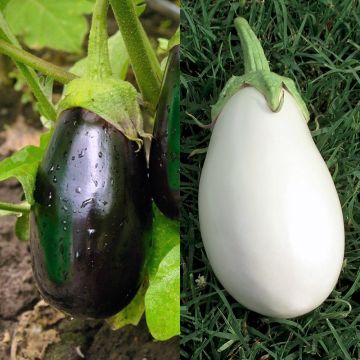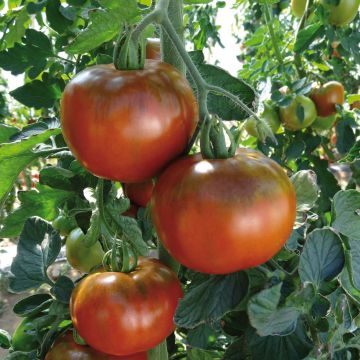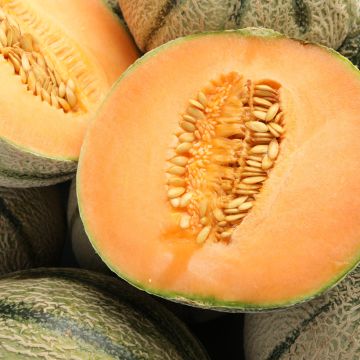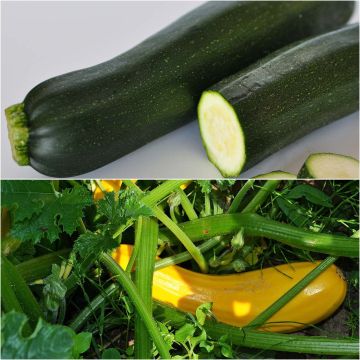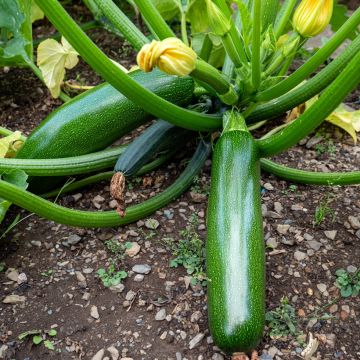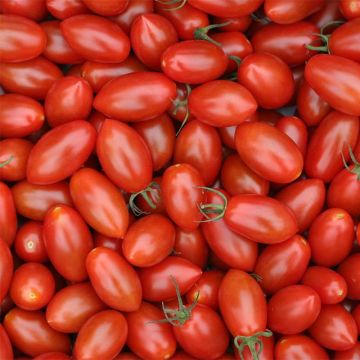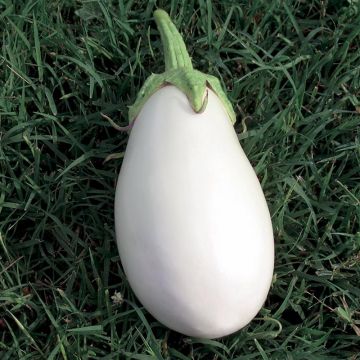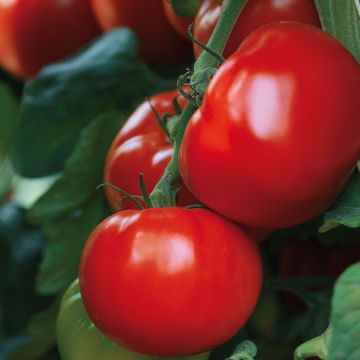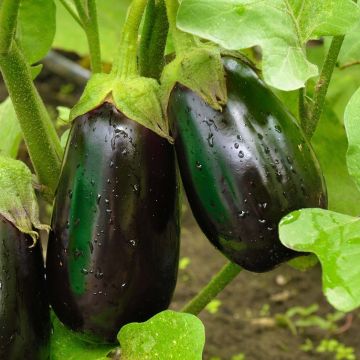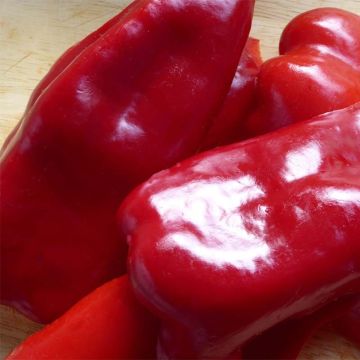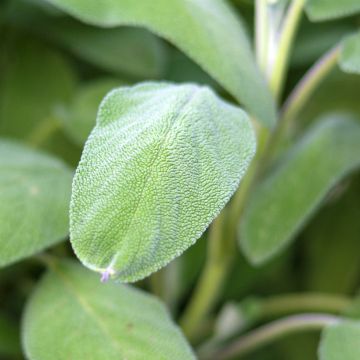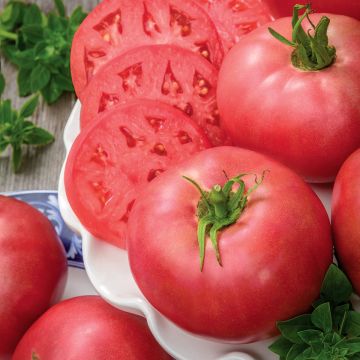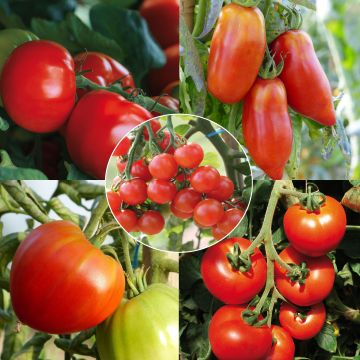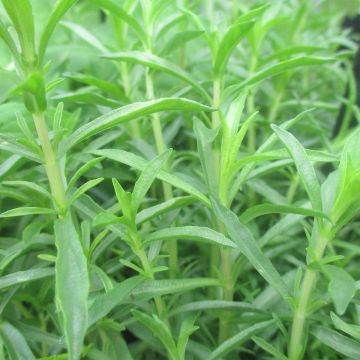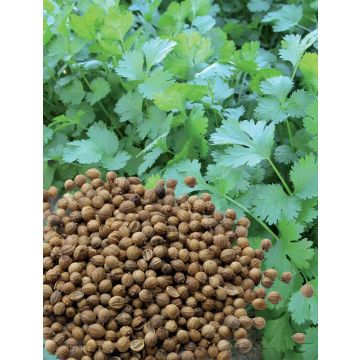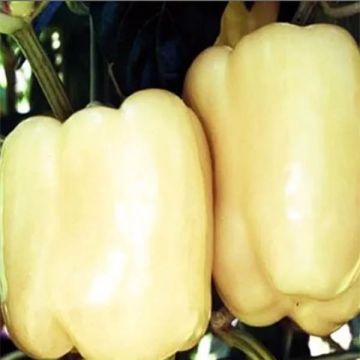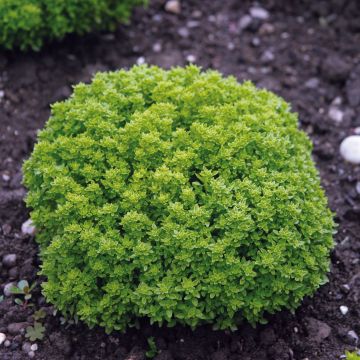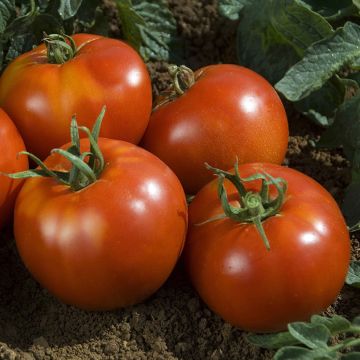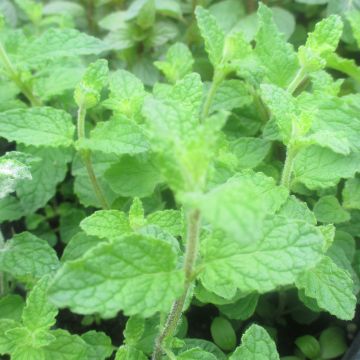Shipping country and language
Your country of residence may be:
Your country of residence is:
For a better user experience on our website, you can select:
Your shipping country:
-
Andorra
-
Austria
-
Belgium
-
Bulgaria
-
Canada
-
Chile
-
Croatia
-
Cyprus
-
Czechia
-
Denmark
-
Estonia
-
Finland
-
France
-
Germany
-
Greece
-
Hungary
-
Iceland
-
Ireland
-
Italy
-
Latvia
-
Lithuania
-
Luxembourg
-
Malta
-
Monaco
-
Netherlands
-
Poland
-
Portugal
-
Romania
-
Slovakia
-
Slovenia
-
Spain
-
Sweden
-
Switzerland
-
United Kingdom
We only deliver seed and bulb products to your country. If you add other products to your basket, they cannot be shipped.
Language:
-
French
-
German
-
Spanish
-
English
-
Italian
My Account
Hello
My wish lists
Log in / Register
Existing customer?
New customer?
Create an account to track your orders, access our customer service and, if you wish, make the most of our upcoming offers.
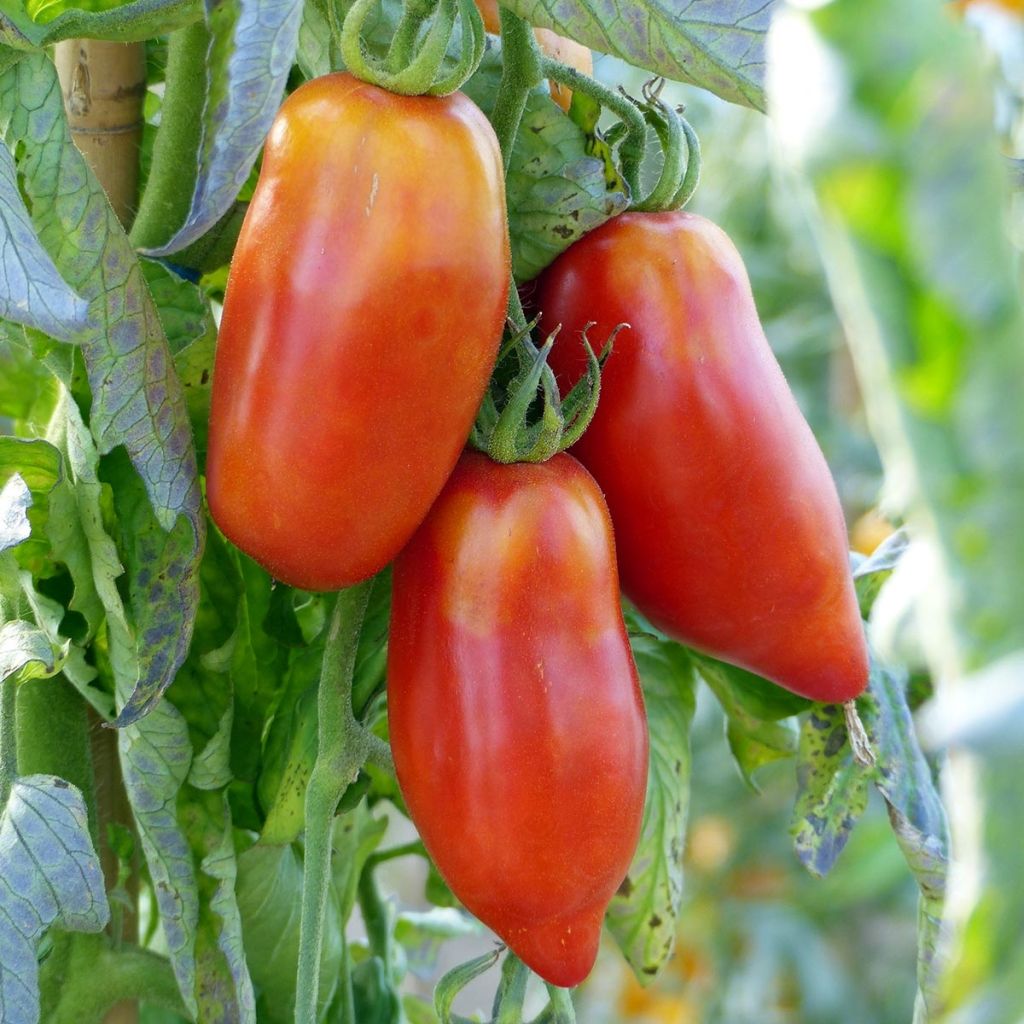

Tomate Cornue des Andes ou Andine Cornue en plants GREFFES
Tomato Grafted plants of Andes Horned or Andine Cornue
Solanum lycopersicum Andine Cornue (Cornue des Andes)
Beefsteak tomato, Beef tomato, Peruvian tomato
C est la première fois que je reçois des plants avec des tomates déjà en forme de fruits ... Pas d autre commentaire ...
Francis , 29/05/2022
Order in the next for dispatch today!
Dispatch by letter from €3.90.
Delivery charge from €5.90 Oversize package delivery charge from €6.90.
More information
This item is not available in your country.
Schedule delivery date,
and select date in basket
This plant carries a 6 months recovery warranty
More information
We guarantee the quality of our plants for a full growing cycle, and will replace at our expense any plant that fails to recover under normal climatic and planting conditions.
From €5.90 for pickup delivery and €6.90 for home delivery
Express home delivery from €8.90.
From €5.90 for pickup delivery and €6.90 for home delivery
Express home delivery from €8.90.
Description
The Andean Horn Tomato or Andean Horn is an early and productive variety with indeterminate growth. It produces elongated fruits in the shape of a horn or chili pepper, weighing approximately 80 to 150 g, with firm flesh, no acidity, and excellent taste. Not very juicy and seedless, it can be consumed in salads, as a sauce, or stuffed. The Tomato is a plant that is grown as an annual, requiring heat and fertile soil. Young plants are planted from April to June, after the last frost, for a harvest from July to September.
The grafting technique consists of giving a desired variety (in this case, 'Andean Horn') the root system of another specially selected variety, called a rootstock. This rootstock has excellent resistance to soil parasites and diseases, which provides extra vigor to the plant: it is then more resistant to difficult external conditions (such as cold climates) and will yield significantly higher than a non-grafted plant. The fruiting of grafted plants starts earlier and lower on the main stem. Thanks to the use of the 'Protector' rootstock, our grafted tomato plants also produce fewer leaves, making ripening and harvesting easier.
The Tomato is native to South America and Central America. Several varieties were already cultivated by the Incas long before the arrival of the Conquistadors. The term "Tomate" comes from the Inca Tomatl and refers to both the plant and the fruit it produces. It is one of the many foods that came to us from the New World, along with beans, corn, squash, potatoes, and chili peppers. The Tomato took significantly longer to reach our taste buds. The reason being: it was long cultivated for its aesthetic and medicinal qualities, but it was considered toxic due to its resemblance to the fruit of the Mandrake, another member of the Solanaceae family. It only became a regular on our tables from the beginning of the 20th century.
The Tomato is a perennial herbaceous plant in tropical climates, but it is grown as an annual in our latitudes. It lignifies over time and produces small, insignificant yellow flowers grouped in cymes that will transform into fruits. Tomatoes can be grown in open ground but can also be planted in containers on a balcony, with a preference for varieties with compact growth.
It is a fruit vegetable that has many nutritional benefits. Low in calories like most vegetables, it is rich in water and contains a particularly interesting molecule: lycopene, a powerful antioxidant. It is also rich in vitamin C, provitamin A, and trace elements.
In terms of cooking, Tomatoes can be consumed raw or cooked in multiple ways: in salads or as appetizers, grilled, stuffed, marinated, preserved, or in sauces. They come in all colors, shapes, and sizes. Take advantage and grow several varieties in your vegetable garden to vary your enjoyment!
Harvesting: The harvest periods vary depending on the earliness: early varieties are harvested from 55 to 70 days after planting, mid-season varieties from 70 to 85 days, and late varieties beyond 85 days. Harvesting should be done when the Tomato has reached its final color and its texture, while remaining firm, shows a slight softening. For better preservation, be sure to pick the fruit with its peduncle. Be careful, immature fruits, stems, and leaves contain solanine and should not be consumed.
Storage: The optimal storage temperature for tomatoes is between 10 and 15°C (50 and 59°F). Refrigeration is possible but alters the taste qualities of the fruits. For longer storage, Tomatoes can be preserved by confit, dried, frozen, canned, or cooked into jam. To confit them, cut your tomatoes in half and collect the juice. Place your half tomatoes face up on the baking tray of your oven. Season with salt, pepper, and sugar, then bake at a very low temperature for at least one hour. Remove your tomatoes, store them in a glass jar, and cover with olive oil.
Gardener's tip: To limit watering, we recommend mulching the soil with thin successive layers of grass clippings, if possible mixed with dead leaves. This protection, which keeps the soil moist, also limits weed growth.
Attention: When transplanting grafted plants, do not bury the graft point!
Report an error about the product description
Tomato Grafted plants of Andes Horned or Andine Cornue in pictures
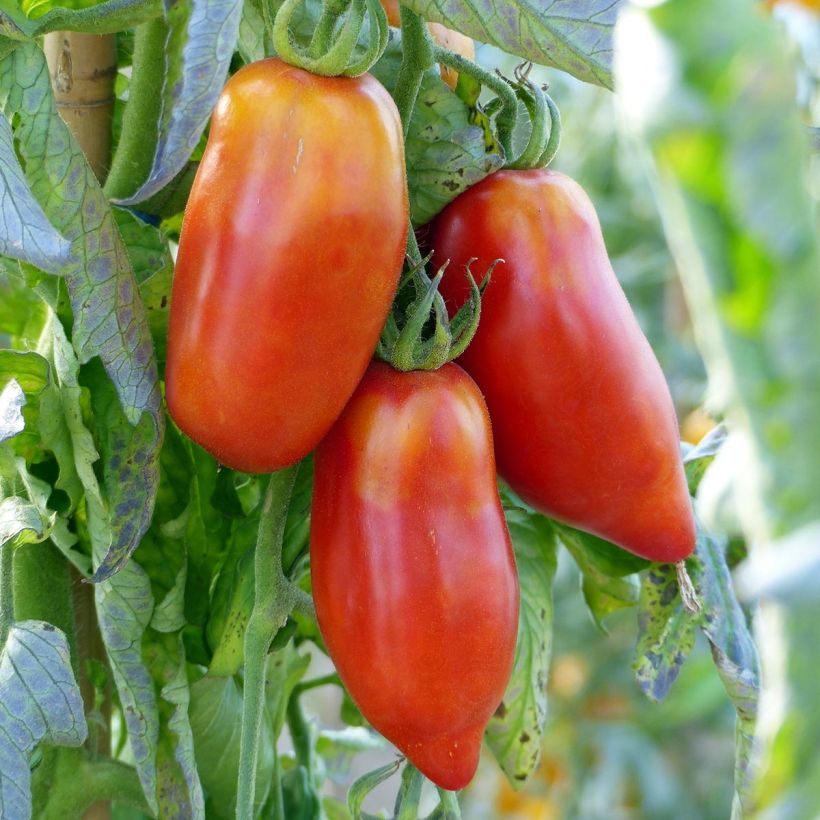

Harvest
Plant habit
Foliage
Other Grafted plants
Planting and care
Tomato plants are easy to grow. Sunlight and warmth are crucial for the success of this cultivation. Tomatoes thrive in rich, well-drained, and deeply loosened soil. A few months before planting, add well-rotted compost after loosening the soil. If your soil is heavy, add some sand during planting.
First, allow the plug plants to grow by transplanting them into 8 to 10.5 cm (3 to 4in) buckets filled with potting soil. Place them in a sunny and heated location. The temperature should never drop below 12-14°C (53.6-57.2°F), as this can cause the foliage to turn yellow and the plant's growth to stop. Once the plants reach a height of about 15 cm (6in), transplant them into the ground if the outside temperatures allow.
Planting in the ground should be done once the risk of frost has passed, usually after the "Ice Saints" around mid-May. Choose a sunny and sheltered location. Space the plants 50 cm (20in) apart in rows and 70 cm (28in) between rows if pruning, or 1 m (0 or 3ft) in all directions for unpruned cultivation. Dig a hole (3 times the size of the plug plant), add some well-decomposed compost to the bottom of the hole. Place your plant, which can be buried up to the first leaves, then backfill. Firm the soil, create a basin around the base, and water generously. Be careful not to wet the leaves to protect your plants from fungal diseases.
Install stakes (quickly after planting to avoid damaging the roots). Mulch at the base of the plants. Water regularly, as irregular watering can lead to calcium deficiency, resulting in a condition called "blossom end rot."
Furthermore, tomatoes, like potatoes, are susceptible to late blight. This is a fungal disease caused by the fungus Phytophthora infestans. Late blight develops in warm and humid weather. Small spots appear, white on the underside of the leaves and green-gray on the top. To reduce the risk, space the plants adequately and avoid watering the foliage. In terms of crop rotation, wait 4 years before growing any plants from the Solanaceae family in the same location, and do not cultivate them in neighboring rows. If necessary, spray with Bordeaux mixture or preparations such as horsetail decoction or garlic infusion.
Less common, tomato cultivation in pots is still possible by choosing varieties with small fruits and placing the pot in a sunny location.
Cultivation
Care
Intended location
-
, onOrder confirmed
Reply from on Promesse de fleurs
Vegetable plants
Haven't found what you were looking for?
Hardiness is the lowest winter temperature a plant can endure without suffering serious damage or even dying. However, hardiness is affected by location (a sheltered area, such as a patio), protection (winter cover) and soil type (hardiness is improved by well-drained soil).

Photo Sharing Terms & Conditions
In order to encourage gardeners to interact and share their experiences, Promesse de fleurs offers various media enabling content to be uploaded onto its Site - in particular via the ‘Photo sharing’ module.
The User agrees to refrain from:
- Posting any content that is illegal, prejudicial, insulting, racist, inciteful to hatred, revisionist, contrary to public decency, that infringes on privacy or on the privacy rights of third parties, in particular the publicity rights of persons and goods, intellectual property rights, or the right to privacy.
- Submitting content on behalf of a third party;
- Impersonate the identity of a third party and/or publish any personal information about a third party;
In general, the User undertakes to refrain from any unethical behaviour.
All Content (in particular text, comments, files, images, photos, videos, creative works, etc.), which may be subject to property or intellectual property rights, image or other private rights, shall remain the property of the User, subject to the limited rights granted by the terms of the licence granted by Promesse de fleurs as stated below. Users are at liberty to publish or not to publish such Content on the Site, notably via the ‘Photo Sharing’ facility, and accept that this Content shall be made public and freely accessible, notably on the Internet.
Users further acknowledge, undertake to have ,and guarantee that they hold all necessary rights and permissions to publish such material on the Site, in particular with regard to the legislation in force pertaining to any privacy, property, intellectual property, image, or contractual rights, or rights of any other nature. By publishing such Content on the Site, Users acknowledge accepting full liability as publishers of the Content within the meaning of the law, and grant Promesse de fleurs, free of charge, an inclusive, worldwide licence for the said Content for the entire duration of its publication, including all reproduction, representation, up/downloading, displaying, performing, transmission, and storage rights.
Users also grant permission for their name to be linked to the Content and accept that this link may not always be made available.
By engaging in posting material, Users consent to their Content becoming automatically accessible on the Internet, in particular on other sites and/or blogs and/or web pages of the Promesse de fleurs site, including in particular social pages and the Promesse de fleurs catalogue.
Users may secure the removal of entrusted content free of charge by issuing a simple request via our contact form.
The flowering period indicated on our website applies to countries and regions located in USDA zone 8 (France, the United Kingdom, Ireland, the Netherlands, etc.)
It will vary according to where you live:
- In zones 9 to 10 (Italy, Spain, Greece, etc.), flowering will occur about 2 to 4 weeks earlier.
- In zones 6 to 7 (Germany, Poland, Slovenia, and lower mountainous regions), flowering will be delayed by 2 to 3 weeks.
- In zone 5 (Central Europe, Scandinavia), blooming will be delayed by 3 to 5 weeks.
In temperate climates, pruning of spring-flowering shrubs (forsythia, spireas, etc.) should be done just after flowering.
Pruning of summer-flowering shrubs (Indian Lilac, Perovskia, etc.) can be done in winter or spring.
In cold regions as well as with frost-sensitive plants, avoid pruning too early when severe frosts may still occur.
The planting period indicated on our website applies to countries and regions located in USDA zone 8 (France, United Kingdom, Ireland, Netherlands).
It will vary according to where you live:
- In Mediterranean zones (Marseille, Madrid, Milan, etc.), autumn and winter are the best planting periods.
- In continental zones (Strasbourg, Munich, Vienna, etc.), delay planting by 2 to 3 weeks in spring and bring it forward by 2 to 4 weeks in autumn.
- In mountainous regions (the Alps, Pyrenees, Carpathians, etc.), it is best to plant in late spring (May-June) or late summer (August-September).
The harvesting period indicated on our website applies to countries and regions in USDA zone 8 (France, England, Ireland, the Netherlands).
In colder areas (Scandinavia, Poland, Austria...) fruit and vegetable harvests are likely to be delayed by 3-4 weeks.
In warmer areas (Italy, Spain, Greece, etc.), harvesting will probably take place earlier, depending on weather conditions.
The sowing periods indicated on our website apply to countries and regions within USDA Zone 8 (France, UK, Ireland, Netherlands).
In colder areas (Scandinavia, Poland, Austria...), delay any outdoor sowing by 3-4 weeks, or sow under glass.
In warmer climes (Italy, Spain, Greece, etc.), bring outdoor sowing forward by a few weeks.
